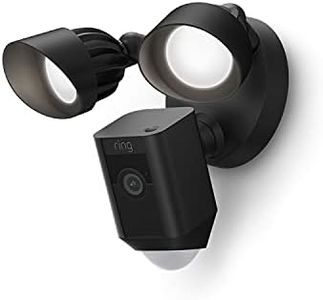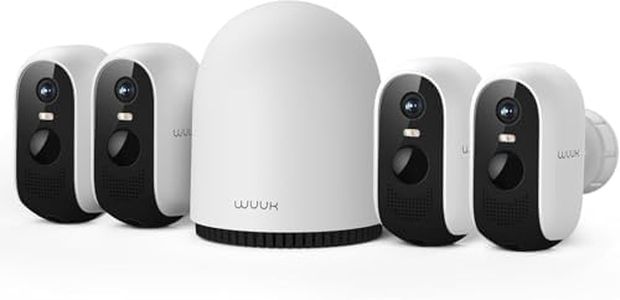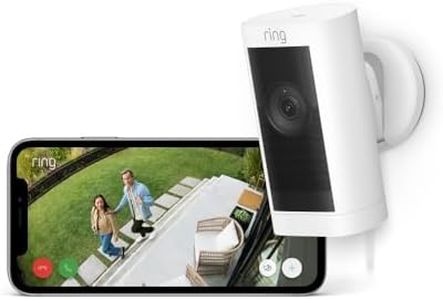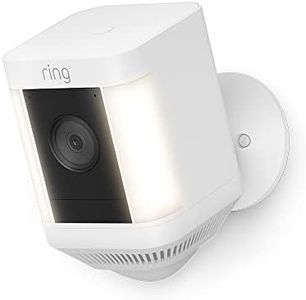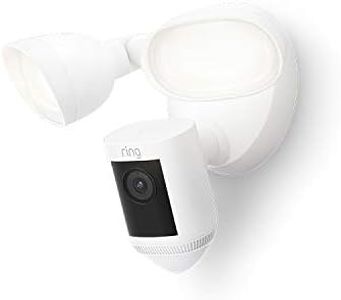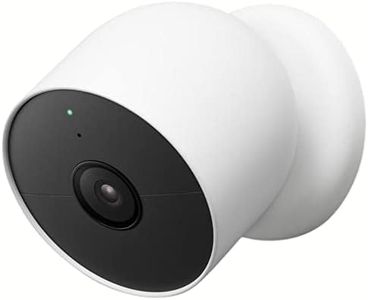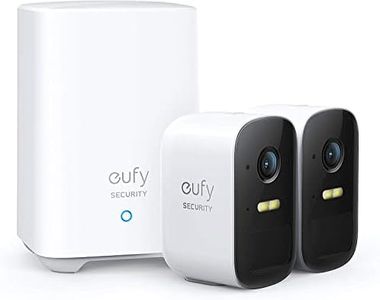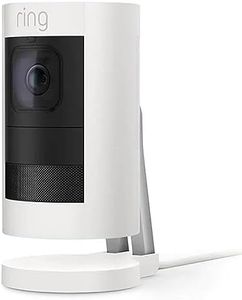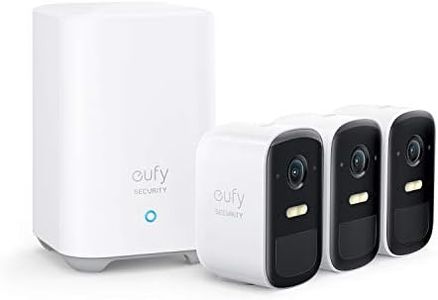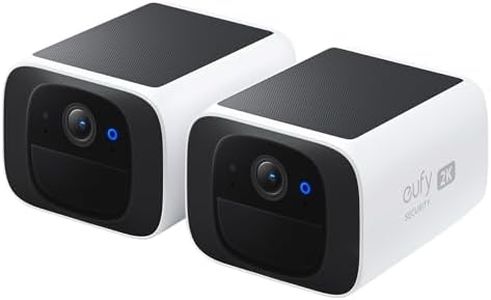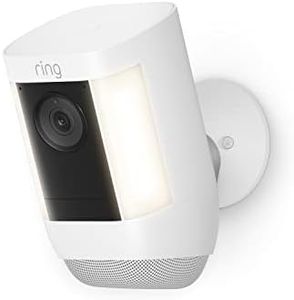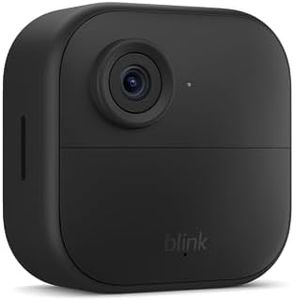We Use CookiesWe use cookies to enhance the security, performance,
functionality and for analytical and promotional activities. By continuing to browse this site you
are agreeing to our privacy policy
10 Best Outdoor Security Cameras
From leading brands and best sellers available on the web.Buying Guide for the Best Outdoor Security Cameras
When choosing an outdoor security camera, it's important to think about what you need to protect, the environment where the camera will be placed, and how you want to access and use the footage. Outdoor security cameras come with a variety of features that help you keep your property safe, but these options can sometimes be confusing. Understanding the key specifications will help you make a more informed decision and find a camera that truly fits your needs.ResolutionResolution refers to how clear and detailed the video captured by the camera will be. Higher resolution means clearer images, making it easier to recognize faces or license plates. Most common resolutions are 720p (HD), 1080p (Full HD), and 4K (Ultra HD). If you just need general monitoring, 720p may be enough. For identifying details, 1080p is the typical sweet spot, while 4K is useful if you want the highest detail, though it uses more storage and may need a faster internet connection for streaming. Choose the resolution that matches how much detail you really need based on what you’re watching.
Field of ViewField of view is the width of the area the camera can see, usually measured in degrees. A wider field of view covers more area, which means you can monitor a larger space with a single camera. Narrow fields of view (below 80 degrees) focus on smaller, specific areas, while wide fields of view (100 degrees or more) capture more of the surroundings at once. If you just want to focus on a doorway or a gate, a narrow field might work; for whole yards or driveways, go for a wide field of view camera.
Night VisionNight vision describes a camera’s ability to record clearly in low light or total darkness. This is important for outdoor cameras because most intrusions or events happen at night. Some cameras use infrared LEDs for black-and-white night vision, and others offer color night vision with special technology. When checking night vision specs, look at the range (how far the camera can see in the dark), which usually varies from 20 to 100 feet. Choose the right night vision based on how large an area you need to monitor after dark.
Weather ResistanceWeather resistance is about how well the camera can handle rain, dust, extreme temperatures, or snow. This is usually shown by an IP (Ingress Protection) rating, like IP65 or IP67. The first number is dust protection, and the second is water resistance. The higher the numbers, the better the protection. For most outdoor placements, look for at least IP65, but if your camera is in a very exposed spot, look for even higher ratings. Pick a camera with a weather resistance level matching your local climate and installation location.
Connectivity (Wired/Wireless)Connectivity means how the camera sends video and receives power. Wired cameras use cables for both, offering stable connections but requiring more work to install. Wireless cameras use Wi-Fi for video and may run on batteries or need power cables. Wireless models are easier to place but depend on Wi-Fi strength and battery life. If you want easy placement and don't want to drill holes, wireless may be best. If you value reliability and don’t mind installation, wired options are worth considering.
Storage OptionsStorage options determine where your recorded video is kept. Some cameras use cloud storage (online) while others use local storage (like memory cards or hard drives). Cloud storage often requires a subscription but lets you access footage from anywhere and adds backup security. Local storage means no ongoing costs but footage is only available where the camera is. Think about your access needs and privacy preferences to choose the storage method that suits you.
Motion DetectionMotion detection allows the camera to record or send alerts only when it senses movement. This helps save storage and ensures you’re only notified of relevant events. Some cameras offer basic motion detection, while others let you adjust sensitivity or mark activity zones. If you want fewer false alerts (like branches moving), choose a camera with adjustable or advanced motion detection. If you are monitoring a less busy area, basic motion detection will usually be enough.
Audio FeaturesSome outdoor cameras have microphones to capture sound, and some come with speakers for two-way audio, so you can speak to visitors remotely. Audio can help you better understand what’s happening outside. If you want to talk to delivery people, deter trespassers, or simply record the full story, look for a camera with both audio recording and two-way communication. If you only care about seeing what happens, simple video is enough.
